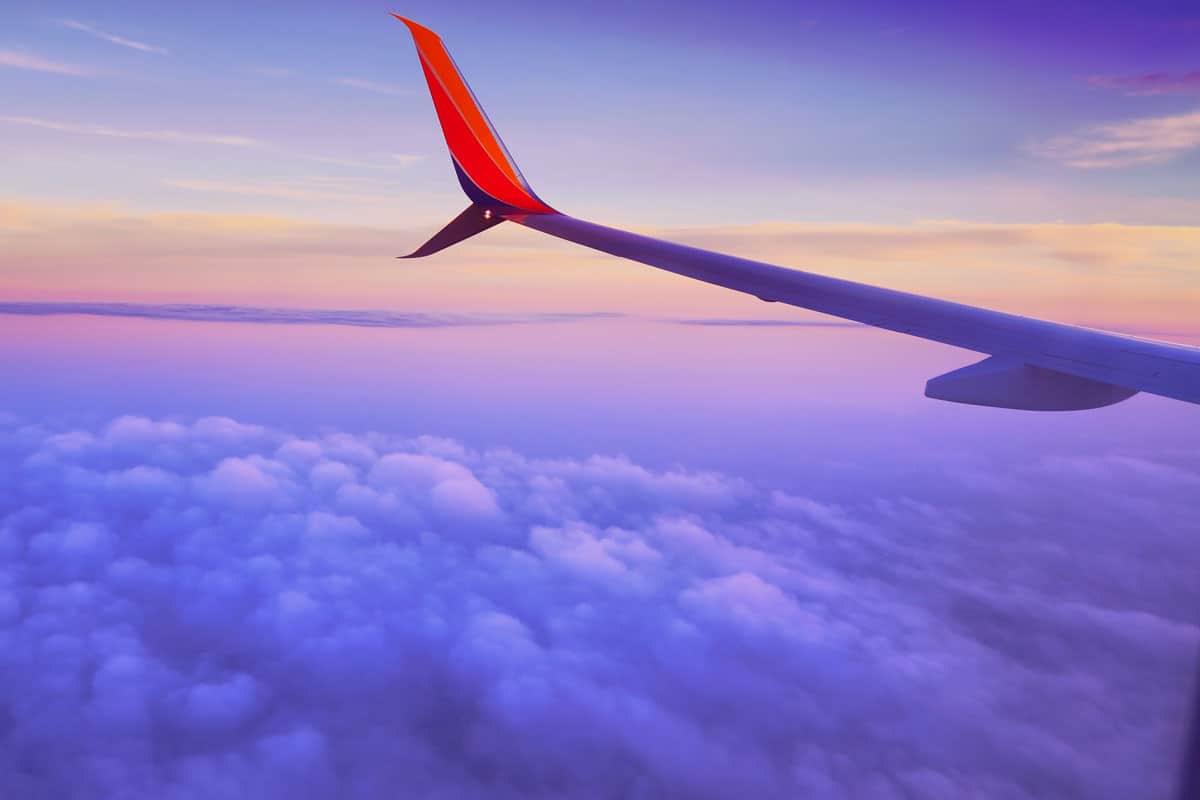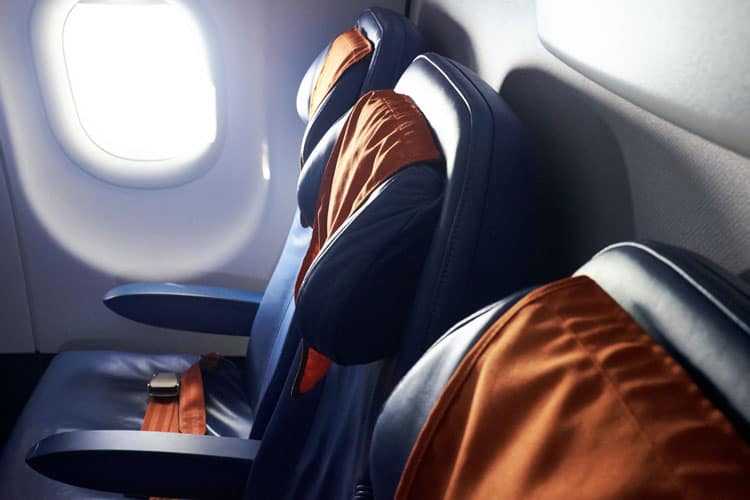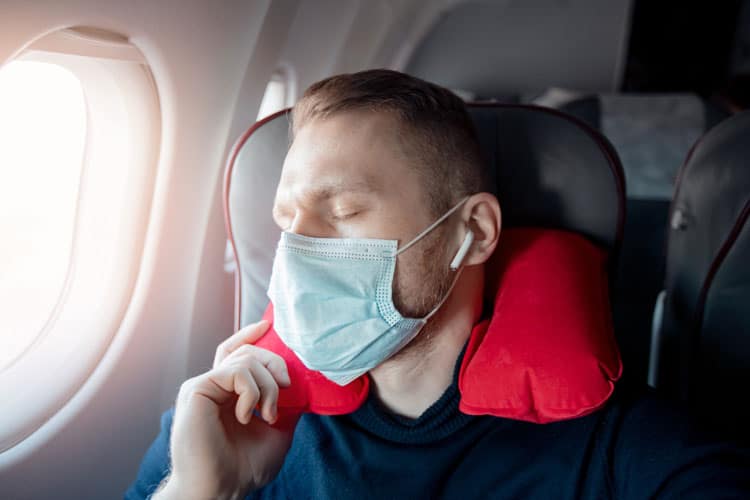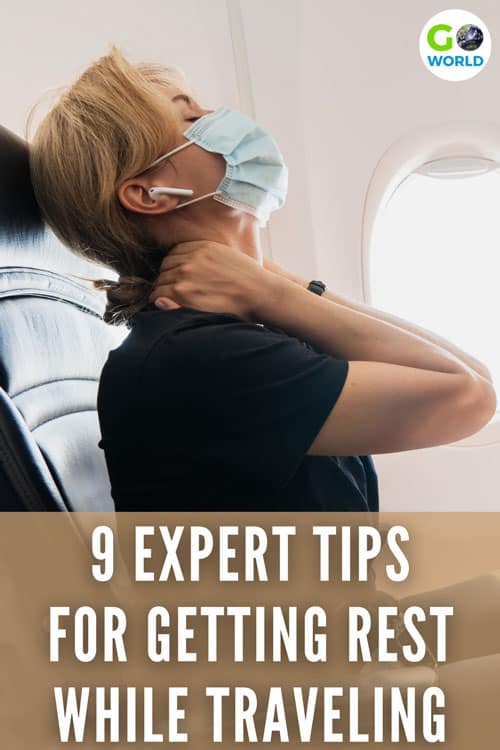
Go World Travel is reader-supported and may earn a commission from purchases made through links in this piece.
After more than a year of severe travel restrictions, around 80 percent of Americans plan to travel this summer, with many planning vacation getaways far from home, some with long stretches of air travel.
Unfortunately, crowded planes, long flights requiring face masks, post-pandemic stress, and lack of sleep provide all the ingredients for a miserable flying experience. While we’re stuck with most of these for now, when you’re traveling, sleep loss doesn’t have to be one of them.
Most people find sleeping on a plane difficult, even at the best of times. Some people’s go-to survival plan is to pop a Dramamine (or a nightcap) and go to sleep. But these days, even Dramamine won’t help you if you can’t get comfortable.
9 Tips From a Specialist
As a sleep specialist, I fly all over the world to help people get better sleep. With a bit of preparation, you can make your air travel experience into a good one, so you arrive at your destination perfectly rested and ready to go. Here are my personal tips for getting your best sleep while traveling by plane.

1. Pick the Best Seat to Rest While Traveling
When it comes to sleeping on a plane, you must plan ahead, as the best rest starts with sitting in the best seats for sleep. Stay away from aisle seats and any seat in the back row whenever possible.
Instead, the best seats for sleeping are in the front of the plane by the windows or in the emergency exit rows. If you’re lucky enough to secure one of these prime sleep seats, after the flight takes off, bring your carry-on down from the overhead bins. Use it to elevate your feet, which helps with blood flow and makes you feel more comfortable.
2. Wear Earplugs or Noise-Canceling Headphones
Studies show that most people have said that earplugs or noise-canceling headphones are their number one choice to help them get their best sleep on a plane. It makes perfect sense.
Noise-canceling headphones help with noise-related stress. The technology was also invented primarily to protect pilots against the loud sounds of the plane engine which could cause hearing loss!

3. Secure Your Head to Rest While Traveling
Many airlines are doing away with reclining seats which already makes it difficult to sleep. You don’t want your head bobbing around when you’re trying to fall asleep. Often, I’ll tie a thin scarf around my forehead and the seatback to secure my head before sleeping.
You can also use the scarf as an eye mask to go with your face mask. Neck support pillows or other travel pillow gadgets can also work.
4. BYOB—Bring Your Own Blanket
Once upon a time, airlines used to pass out blankets and mini pillows like candy, but those days are long gone. If you tend to get cold, you’ll want to pack a light blanket in your carry-on luggage.
Instead of packing a blanket, I like to wear a heavy zippered travel sweatshirt or a coat when I board the plane, depending on my destination. Then I can turn the sweatshirt or coat around, put my arms in the sleeves, and wear it backward. My arms stay warm and my “blanket” won’t fall off.

5. Wear an Eye Mask to Rest While Traveling
Light disrupts your natural circadian rhythm, preventing you from falling asleep, so an eye mask is a must.—and no, you can’t just use your face mask. Although if you’re caught in a pinch, an extra face mask could easily double as an eye mask.
6. Download a Sleep App
If you can quiet your mind, you’re more likely to be able to fall asleep, so listening to sleep meditation tracks can be helpful. Many apps and websites offer free meditative sleep tracks. I lead one called NamaSleep, which is based on Yoga Nidra practices.

7. Drink Plenty of Water and Avoid Caffeine, Salty Food, and Alcohol
Airplanes are an arid environment that will naturally dehydrate you while you’re traveling. When you’re dehydrated, you’re going to feel fatigued, and you may experience headaches, nausea, and more.
A good rule of thumb is to drink eight ounces of water every hour you are in the air on flights over three hours. If you must have a cocktail, follow it with a glass or bottle of water to make up for the dehydrating effects of the alcohol.

8. Put Antibiotic Ointment Under Your Nostrils
While the air filtration on planes has improved, it’s still a dehydrating environment. Use the antibiotic ointment to help prevent dryness in your nose and block any germs in the air that might creep through your face mask.
9. Put Your Electronics Away Early to Rest While Traveling
The blue light emissions from the screens on phones, tablets, and laptops are notorious for disrupting your circadian rhythm, and not just on flights.
If you’re planning on sleeping on the flight, be sure to put your electronics away well before you plan to sleep—if you only carry one thing away, this rule will help you sleep better at home or on the go.
Author’s Bio: Lauri Leadley is a clinical sleep educator and president of Valley Sleep Center based in Glendale, Arizona.
- Top 5 Spots for Stargazing in North Carolina - April 15, 2024
- The Low-Key Magic of Ghent, Belgium - April 15, 2024
- Swiss Travel: A Guide to Exploring Switzerland by Train - April 15, 2024
